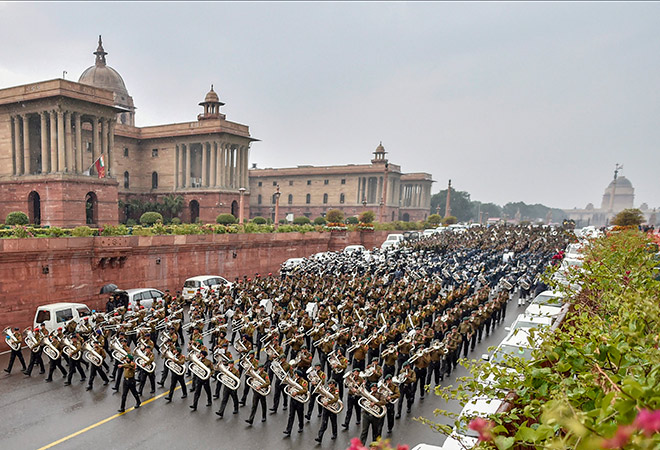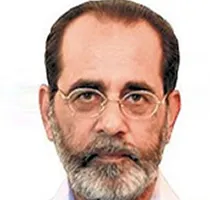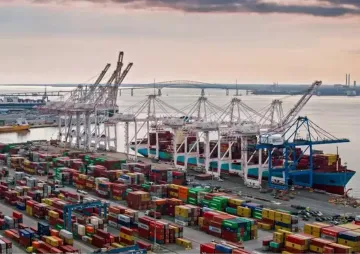India is gripped by an election fever. All elections carry elements of unpredictability but in India’s seventy year history,
the 2019 elections are critical. Prime Minister Narendra Modi came to power in 2014 and is seeking another term. The opposition parties are concerned about
Modi’s polarising influence and are determined to prevent a BJP victory though they have been unable to put up a united front on account of internal differences.
Election issues and messaging
Indian elections are traditionally fought on local issues, primarily economic – inflation, growth and jobs, but this time, there are shades of
foreign policy too.
National security is on the election agenda with Modi presenting himself as a tough and decisive leader, especially when it comes to dealing with terrorist attacks coming from Pakistan based jihadi groups. However,
externally sponsored terrorism is not the only foreign policy challenge that India will be facing in coming years.
India’s
900 million voters will cast their votes over the next five weeks in seven phases, to elect 543 members of Lok Sabha (lower house of the parliament) and counting will begin on 23 May. More than
1.7 million Electronic Voting Machines will be used; the results are expected the same day. The leader of the largest party (or the largest coalition) is normally invited by the President to form the government. As in 2014, the BJP has announced that its candidate for PM is Modi. In contrast, the
opposition parties do not have a coalition leader and though the Congress maintains that Rahul Gandhi is their leader, it is apparent that the Congress on its own is unlikely to reach anywhere near the numbers needed to form the government.
Modi’s nationalism brand
During his first tenure, Prime Minister Modi sought to impart a new momentum and a distinctive personal style to Indian foreign policy. After five years,
the report card is mixed. Perhaps the most significant aspect has been Modi’s focus on summitry marked by a
highly personalised diplomacy, accompanied by friendly hugs. He tried to establish a personal rapport with Presidents Obama and then Trump; with Xi Jinping by inviting him to his home state - Gujarat; with Shinzo Abe by taking him to Varanasi; dropping in at Lahore to greet former PM Nawaz Sharif on his birthday etc.
The
results have been mixed. With Pakistan, relations are at a low as also with China, despite the much touted informal summit in Wuhan last year to bring relations back on track after the Doklam border stand-off in 2017. Trump continues to complain about
India’s non-tariff barriers and make things difficult for Indian professionals. In the neighbourhood, India’s relations with
Nepal have yet to recover from the unofficial ‘blockade’ in 2015 that was intended to persuade it to give more equal treatment to the Madhesi community in its new constitution. Relations with
Japan, Israel, Iran and the Gulf kingdoms have shown improvement.
Russia has remained a major defence supplier though some of its regional initiatives with Afghanistan and Pakistan have raised eyebrows in Delhi.
A deteriorating political situation in
Kashmir especially post-2016 has led to increasing incidents of terrorism. After the Uri attack, India publicly retaliated by undertaking a ‘surgical strike’ against terrorist launch pads across the Line of Control. In the past, such actions had been taken locally which made diffusing tensions subsequently easier. Another
terrorist attack in February this year led to an air strike at the training camps of Jaish-e-Mohammed in Pakistan. Tensions rose when Pakistan retaliated and in the dogfight, an Indian aircraft was downed. The Indian pilot who ejected in Pakistan was handed back amid much rhetoric. Pakistan has dismissed Indian efforts at retaliation while Modi government has sought to define ‘
a new normal’ that it will not be deterred by Pakistan’s nuclear blackmail, and reserves the right to retaliate against Pakistan based terrorist groups.
Emerging foreign policy challenges
With growing regional and global uncertainties,
India’s foreign policy challenges will become more acute. Managing relations with a rising and more assertive China will be the over-riding challenge. This has a direct bearing on India’s neighbourhood policy as well as Indian Ocean policy because of
China’s growing influence in Nepal, Bangladesh, Sri Lanka, Myanmar and Maldives. While India is a member of BRICS and a founding member of Asian Infrastructure Investment Bank, it has studiously stayed away from China’s flagship
Belt and Road Initiative (BRI).
At the same time, the Quad, consisting of
Australia, Japan, US and India has been revived with the objective of a ‘
free and open Indo-Pacific’. India has also stepped up its economic cooperation activities in the neighbourhood which have often been mired in bureaucratic delays and had drawn unfavourable comparison with Chinese projects. An
Asia-Africa Growth Corridor, together with Japan is intended to offer a transparent, sustainable and local capacity enhancing alternative to the BRI for infrastructure building.
Relations with the US have been on a generally positive trajectory since the end of the Cold War, though there were ups and downs during the last quarter century. However, the US can be a demanding partner and
India values its autonomy. Trump’s policy of looking for an early exit from Afghanistan is often seen with some concern in India. Balancing India’s interests between its oil importing
partners among the Gulf sheikhdoms which also host nearly seven million Indian workers,
Israel with whom India shares a growing counter-terrorism and defence relationship and
Iran which provides vital access to Afghanistan through the Chahbahar port but is under increasing sanctions from the US, calls for deft diplomacy, and more so today when
Saudi-Iran rivalries are sharper and unpredictability is higher.
Russia maintains its special relationship with India but also finds it comforting to align with China in its anti-US posture as it seeks to assert itself in Afghanistan by pushing for reconciliation with the Taliban while making it clear that the current regime in Kabul has outlived its legitimacy.
These challenges are not of India’s making but certainly will preoccupy whoever takes charge in end May in Delhi. Modi adopted a more active and energetic diplomatic style but soon discovered that
personal summitry has limited utility. In case there is a non-BJP coalition, it is likely that the government will be more preoccupied with domestic political balancing and perhaps have less time for foreign policy. However, this will not significantly alter Indian approaches.
This commentary originally appeared in ISPI.
The views expressed above belong to the author(s). ORF research and analyses now available on Telegram! Click here to access our curated content — blogs, longforms and interviews.




 PREV
PREV


